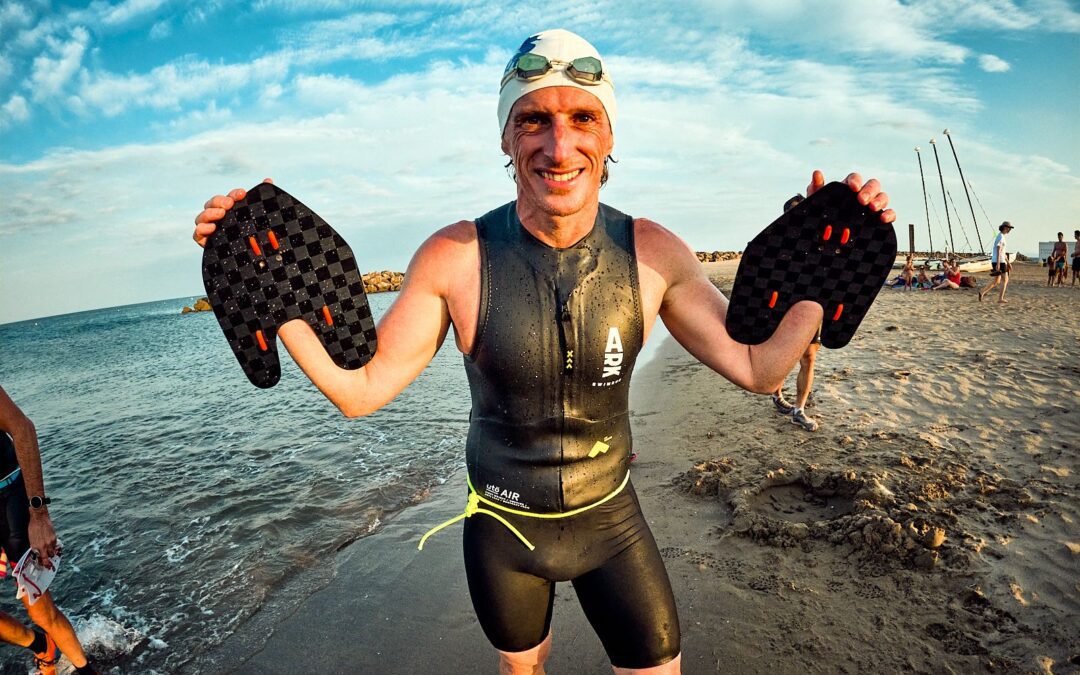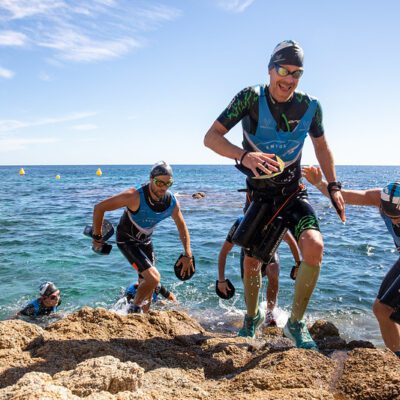Hand paddles play a crucial role in enhancing swimming efficiency and performance in swimrun. However, selecting the right paddle size is essential for balancing speed, endurance, and comfort. And appearance …
Understanding Paddle Size and Its Impact
Hand paddles come in various sizes and materials, each influencing the swimmer’s stroke and overall performance differently. Larger paddles increase the surface area, providing more resistance and potentially boosting propulsion. This can lead to faster swimming times but also places greater strain on the shoulders and arms. Smaller paddles, on the other hand, offer less resistance, reducing the risk of injury but also the effect of having paddles …
Factors to Consider When Choosing Paddle Size
- Experience Level: Beginners should start with smaller paddles to build strength and technique without overloading their muscles. As they become more comfortable and develop better form, they can gradually transition to larger paddles.
- Swim Fitness: Swimmers with well-conditioned shoulders and upper bodies can handle larger paddles more effectively. Those still building their swim fitness should opt for smaller paddles to prevent overuse injuries.
- Race Distance: For longer swimrun events, smaller paddles are often preferable to conserve energy and reduce fatigue. In shorter races, where speed is more critical, larger paddles might provide a competitive edge.
- Swimming Technique: Efficient swimming technique is crucial when using larger paddles. Swimmers with strong, refined strokes can benefit more from the increased surface area. Those still perfecting their technique should focus on smaller paddles to avoid reinforcing bad habits.
- Personal Comfort: Paddles that cause discomfort can detract from overall performance. Swimmers should choose paddles that feel natural and comfortable throughout their stroke. Chafing on wrist, poorly adjusted straps and bulk on the run also matter!
What about carbon?
Carbon hand paddles are exceptionally lightweight compared to traditional plastic or silicone paddles. This reduced weight minimizes arm fatigue, allowing athletes to maintain a strong stroke over longer distances without tiring as quickly. There is a few grams less to carry on the run.
Carbon fiber provides superior stiffness, which translates to better force transfer with each stroke. This means that more of the swimmer’s energy is effectively converted into forward motion, enhancing propulsion and speed. But then again, you need to be able to control this stiffness!
The stiffness and design of carbon hand paddles often result in better hydrodynamics. This improved water flow around the paddles can lead to more efficient strokes, reducing drag and making each pull through the water smoother and more effective.
Carbon paddles often have a sleek, high-tech appearance that can boost an athlete’s confidence. The psychological advantage of using high-performance gear shouldn’t be underestimated, as feeling well-equipped can contribute positively to an athlete’s mental state and overall performance.
Practical Tips for Finding the Right Fit
- Start Small: Begin with smaller paddles and progressively increase size as technique and strength improve.
- Listen to Your Body: Pay attention to any signs of discomfort or pain, especially in the shoulders. If larger paddles cause strain, revert to a smaller size.
- Test in Training: Experiment with different paddle sizes during training sessions to determine which offers the best balance of speed and comfort.
- Consult Fellow Swimrunners: Experienced swimrunners can provide valuable insights and recommendations based on their experiences with different paddle sizes.
Conclusion
Selecting the right paddle size in swimrun is a personal decision influenced by various factors, including experience, fitness, race distance, technique, comfort and budget.
Our best advice is to try! Borrow from a friend or your friendly neighborhood sports shop. Try carbon only when you are ready to invest! The experience can be a bit lite taking a Ferrari for a test drive and then getting back into your old Volvo …






